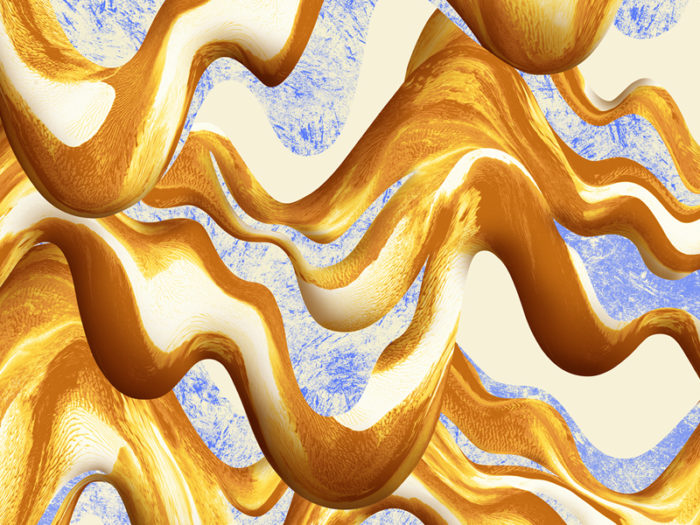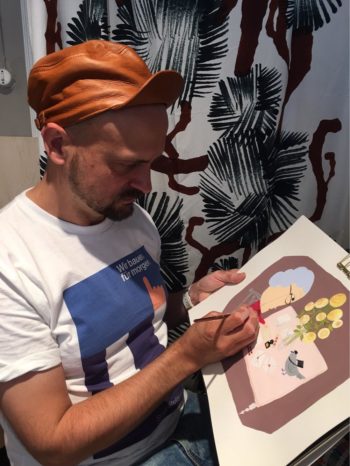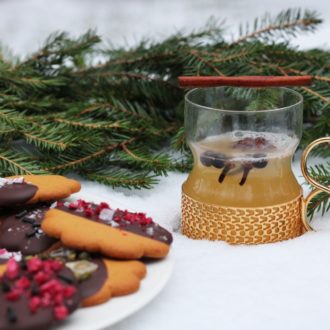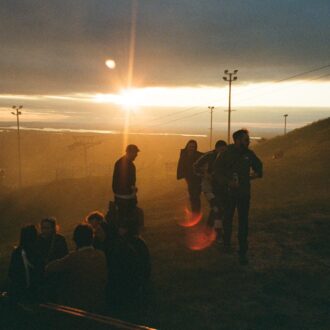Nordic design is world famous, helped in no small part by the careers of Finnish creatives. The design scene is nonstop, but if there was a designated season for design in Finland, early autumn would be it.
Honoured as World Design Capital in 2012, Helsinki has also held its own Helsinki Design Week every autumn since 2005. The 2017 festival runs from September 7 to 17 and features about 250 events. Attendance is expected to hit 200,000.
Finland has been selected as the first country to chair the World Design Weeks network, a group of 50 design and urban festivals from all over the world. During Helsinki Design Week, their representatives gather on September 14 and 15 at the World Design Weeks Summit, which includes events such as DesignCommons, where the audience can interact with international design stars.
Anna Alanko: Designer, illustrator and colour enthusiast

Design straddles the art world and the commercial sector: Anna Alanko created this pattern for use by the ice cream brand Häagen-Dazs.Photo: Anna Alanko
Q: What drives you? Does inspiration or discipline keep you going?
A: I’d say it’s a combination of both. I’m a very disciplined worker, but I do get bored pretty easily, so in order to keep myself motivated and inspired there needs to be an element of discovery and play in my work process. Inspiration often comes to me when I’m working with unfamiliar materials or learning a new skill.
Q: How important is Helsinki Design Week for Finnish artists and gallery owners?
A: Being the biggest design event in the Nordic countries, it is without a doubt one of the most important and comprehensive design-related events in Finland. It offers amazing exposure for Finnish designers both nationally and internationally, but it also brings designers closer to their customers, which is great!
Q: What’s your next project?
A: I’m making some cover art for a British band and designing surface patterns for clients in Sweden, the US and Japan. Lately I’ve also been dabbling with 3D, which is super inspiring and totally new for me. In the future I hope to make more illustrations and patterns mixing 3D elements with my organic and dreamy surface designs.
Matti Pikkujämsä: Portrait artist, illustrator and gallery owner

Working is about “passion and curiosity,” says Finnish designer Matti Pikkujämsä.Photo courtesy of Matti Pikkujämsä
Q: How do you go about creating art?
A: My way of working is about passion and curiosity; most of my work is sketchbooks, made only for me. I see inspiring things all the time and that gets me into a good working mood. I enjoy working. As a portrait maker, illustrator or pattern maker I am a humble servant. I want to make people happy, but not in an obvious way.
Q: How would you like to see Helsinki Design Week develop in the future?
A: My image is that it could keep going and expand into unexpected places that normally aren’t reached by Finnish design. It should not be just in design shops but anywhere. I hope people could start to see “design” as thinking, not only as decoration. And that goes for designers as well.
Q: What are you working on now?
A: Now I’m making a book and products called Cup of Therapy. My husband and I started the Instagram blog in May and it is expanding very fast. The book will be published by Otava in October and we’ll have products like T-shirts and mugs very soon.
Kari Korkman: Founder and CEO of Helsinki Design Week

Speakers at DesignCommons include (from left): Marko Ahtisaari of Sync Project; Winy Maas of MVRDV; Alex Groves and Azusa Murakami of Studio Swine (Super Wide Interdisciplinary New Explorers); and Cees van der Veeken of LOLA Landscape Architects.Photo: World Design Weeks Summit
Q: What does it mean for Finland to be president of the World Design Weeks network?
A: We can be proud of the recognition, but at the end of the day it’s all about how well Finnish designers learn to utilise the international network. Design weeks gather a wide range of stakeholders: city authorities, universities, NGOs, designers, manufacturers, retailers, media and local consumers. World Design Weeks is an enabler for Finnish designers to make valuable connections.
Q: How do you feel about what you’ve achieved since the beginning of Helsinki Design Week?
A: We don’t tend to look back that much. We have drawn a big picture in which we see ourselves as partners to the industry and other stakeholders. Every achievement is a result of these partnerships. We are dependent upon content like fresh initiatives and novel products which the industry produces.
Q: What do you think about the future?
A: There are some trends that I am not excited about. The spectres of populism, nationalism and protectionism loom larger than ever. Creativity and innovation oppose these trends. New thoughts and ideas only emerge when we are open and collaborative.
By David J. Cord, August 2017



